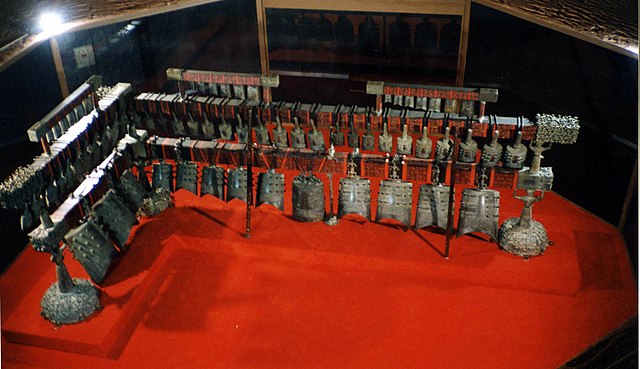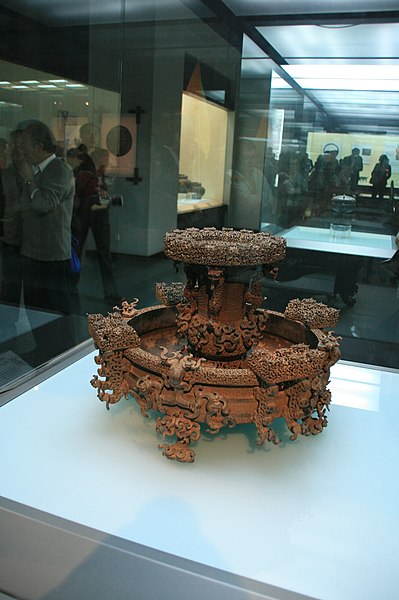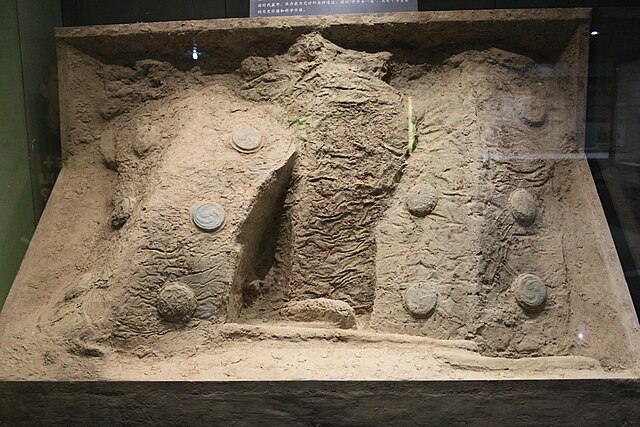Tomb of Marquis Yi of Zeng
The Tomb of Marquis Yi of Zeng is an archaeological site in Leigudun Community (擂鼓墩社區), Nanjiao Subdistrict (南郊街道), Zengdu District, Suizhou, Hubei, China, dated sometime after 433 BC. The tomb contained the remains of Marquis Yi of Zeng, and is one of a handful of ancient Chinese royal tombs to have been discovered intact and then excavated using modern archaeological methods. Zeng was a state during the Spring and Autumn period of China. The tomb was made around 433 BC, either at the end of the Spring and Autumn period or the start of the Warring States period. The tomb comes from the end of the thousand-year-long period of the burial of large sets of Chinese ritual bronzes in elite tombs, and is also unusual in containing large numbers of musical instruments, including the great set of bells for which it is most famous.
Top view of the Bianzhong of Marquis Yi of Zeng
One of the anthropomorphic posts in the musical instrument, about 60 cm tall
Bronze statue of an "antlered crane" from the tomb
Zun pan (尊盘) vessel
The Spring and Autumn period in Chinese history lasted approximately from 770 to 481 BCE which corresponds roughly to the first half of the Eastern Zhou period. The period's name derives from the Spring and Autumn Annals, a chronicle of the state of Lu between 722 and 481 BCE, which tradition associates with Confucius. During this period, royal control over the various local polities eroded as regional lords increasingly exercised political autonomy, negotiating their own alliances, waging wars amongst themselves, up to defying the king's court in Luoyi. The gradual Partition of Jin, one of the most powerful states, is generally considered to mark the end of the Spring and Autumn period and the beginning of the Warring States period.
Leather horse armour from the Tomb of Marquis Yi of Zeng, 5th c. BC
Yue style bronze building and entertainers (Spring and Autumn period)
Shields from a Guo tomb
Urbanization during the Spring and Autumn period.








